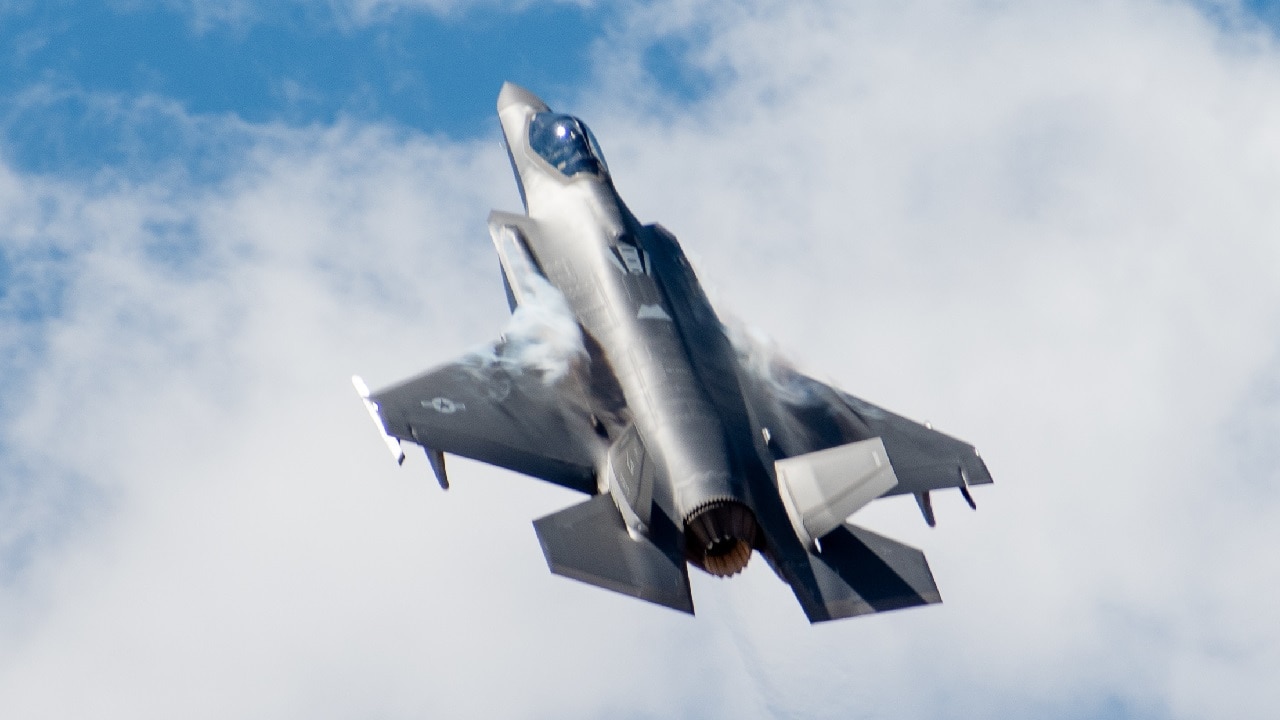F-35A Introduction: More Than a Fighter
The Lockheed Martin F-35A Lightning II is not merely a new fighter jet; it represents a fundamental, and fiercely debated, paradigm shift in air power doctrine.
It is simultaneously the technological centerpiece of 21st-century global security for the United States and its allies and a case study in the immense complexities, costs, and controversies of modern defense procurement.
Conceived to replace a vast and aging array of legacy aircraft with a single, versatile family of fighters, its journey from concept to combat readiness has been defined by both revolutionary innovation and persistent challenges.
This report provides an exhaustive analysis of the F-35A, arguing that its strategic value is derived not from traditional metrics of fighter performance but from its revolutionary capabilities as a networked, stealthy sensor node.
This technological ambition, however, has come at the cost of its foundational goal of affordability.
This has created a persistent tension between its immense potential and its practical, real-world challenges, including cost, reliability, and sustainment, that will define its legacy.
The Genesis of a Global Workhorse: The Joint Strike Fighter Program
The Strategic Imperative: Replacing an Aging and Disparate Fleet
The origins of the F-35 lie in the strategic realities of the post-Cold War era.
The U.S. Department of Defense (DoD) faced the daunting task of replacing a wide range of specialized, aging aircraft across its services.
Two U.S. Air Force F-35A Lighting IIs fly in formation with two ROKAF F-35As during Freedom Shield 25, a defense-oriented exercise featuring live, virtual, and field-based training, March 13, 2025. The aircraft participated in dynamic targeting and aerial refueling training, validating the capability of ROK and U.S. Air Forces, to find, fix, and defeat a range of threats. (Photo courtesy of Republic of Korea Air Force)
The U.S. Air Force needed a successor to its workhorse, the F-16 Fighting Falcon, and the venerable A-10 Thunderbolt II, a close air support aircraft.
The U.S. Navy required a replacement for its carrier-based F/A-18 Hornet variants, while the Marine Corps needed to replace its unique AV-8B Harrier vertical takeoff jets and its own F/A-18s. Key allies, like the United Kingdom, faced similar block obsolescence with their Harrier and Tornado fleets.
The prospect of developing, procuring, and sustaining separate, bespoke aircraft for each of these roles was deemed financially unsustainable. This reality was underscored by the 1991 cancellation of the Navy’s A-12 Avenger II stealth attack aircraft program due to severe cost and schedule overruns, which created a critical capability gap and served as a powerful catalyst for a new, joint approach to aircraft development.
From CALF and JAST to JSF: The Birth of a Megaproject
The solution that emerged was the Joint Strike Fighter (JSF) program, formed from the merger of two preceding initiatives.
The first was the Common Affordable Lightweight Fighter (CALF), a DARPA-led project initially focused on developing a Short Takeoff and Vertical Landing (STOVL) aircraft for the U.S. Marine Corps, which the Air Force later joined to seek a replacement for the F-16. The second was the Joint Advanced Strike Technology (JAST) program, established in 1993 to develop common aircraft, weapons, and sensor technologies for the Air Force, Navy, and Marine Corps.
A key philosophical shift of the JAST/JSF program was to treat cost as a variable independent of other factors.
Learning from the failures of past programs where performance requirements drove costs to unsustainable levels, the JSF program involved warfighters early in the design process to make crucial trade-offs between capability and cost. This was a direct attempt to avoid the pitfalls of earlier joint programs, such as the 1960s TFX, which attempted to build a universal airplane that ultimately performed poorly for all its intended users.
However, this very ambition of creating a single platform to meet the disparate needs of three services—a conventional takeoff and landing (CTOL) version for the Air Force, a STOVL version for the Marines, and a carrier-based version for the Navy—introduced immense technical complexity that would ultimately challenge its core goal. The engineering solution for the F-35B’s vertical lift system, a complex shaft-driven lift fan, dictated a wider fuselage cross-section.
This fundamental design constraint was inherited by the F-35A, making it physically larger and less aerodynamically optimized than a pure CTOL design might have been. This compromise, driven by the “joint” requirement, added weight and complexity across the entire aircraft family, which directly translated into higher manufacturing and operational costs, creating a paradox where the pursuit of “jointness” undermined the foundational goal of “affordability.”
The X-Plane Fly-Off: Lockheed Martin’s X-35 vs. Boeing’s X-32
In November 1996, the DoD awarded contracts to two industry teams, led by Lockheed Martin and Boeing, to build and fly concept demonstrator aircraft. Lockheed Martin proposed the X-35, which featured a more conventional fighter design and a novel, separate shaft-driven lift fan for its STOVL variant. This system proved to be a more robust and lower-risk solution for vertical flight.
Boeing’s X-32 was a more radical design, featuring a large, single-piece delta wing and a direct-lift engine configuration that required complex reconfiguration for STOVL flight. After a rigorous competition, the DoD announced on October 26, 2001, that Lockheed Martin’s X-35 had won.
The program then advanced into the System Development and Demonstration (SDD) phase, and the aircraft was officially designated the F-35.
The Promise of International Partnership
A core tenet of the JSF program was to mitigate its enormous cost by sharing development expenses among key allies. The United Kingdom was the first and most significant partner, contributing $200 million to the concept demonstration phase alone.
A consortium of other nations, including Italy, the Netherlands, Canada, Australia, Denmark, and Norway, soon followed it.
This global enterprise was designed not only to distribute costs but also to create a vast production base, leveraging economies of scale to drive down unit prices while ensuring a high degree of interoperability among allied air forces for decades to come.
Anatomy of a Networked Predator: F-35A Technical Specifications and Core Systems
Airframe, Propulsion, and Kinematic Performance
The F-35A is a single-seat, single-engine fighter designed for a multitude of roles. Its performance characteristics reflect a design philosophy that prioritizes stealth, sensor integration, and situational awareness over raw kinematic performance. It is powered by a single Pratt & Whitney F135-PW-100 afterburning turbofan, the most powerful fighter engine in the world, capable of producing 43,000 pounds of thrust.
This gives the aircraft excellent acceleration and energy. While its top speed of Mach 1.6 is lower than some 4th-generation fighters it replaces, such as the F-16, this figure is achievable with a full internal weapons load.
This is a critical distinction, as legacy fighters carrying external weapons and fuel tanks suffer from significant parasitic drag that degrades their performance, a penalty the F-35A avoids in its stealth configuration.
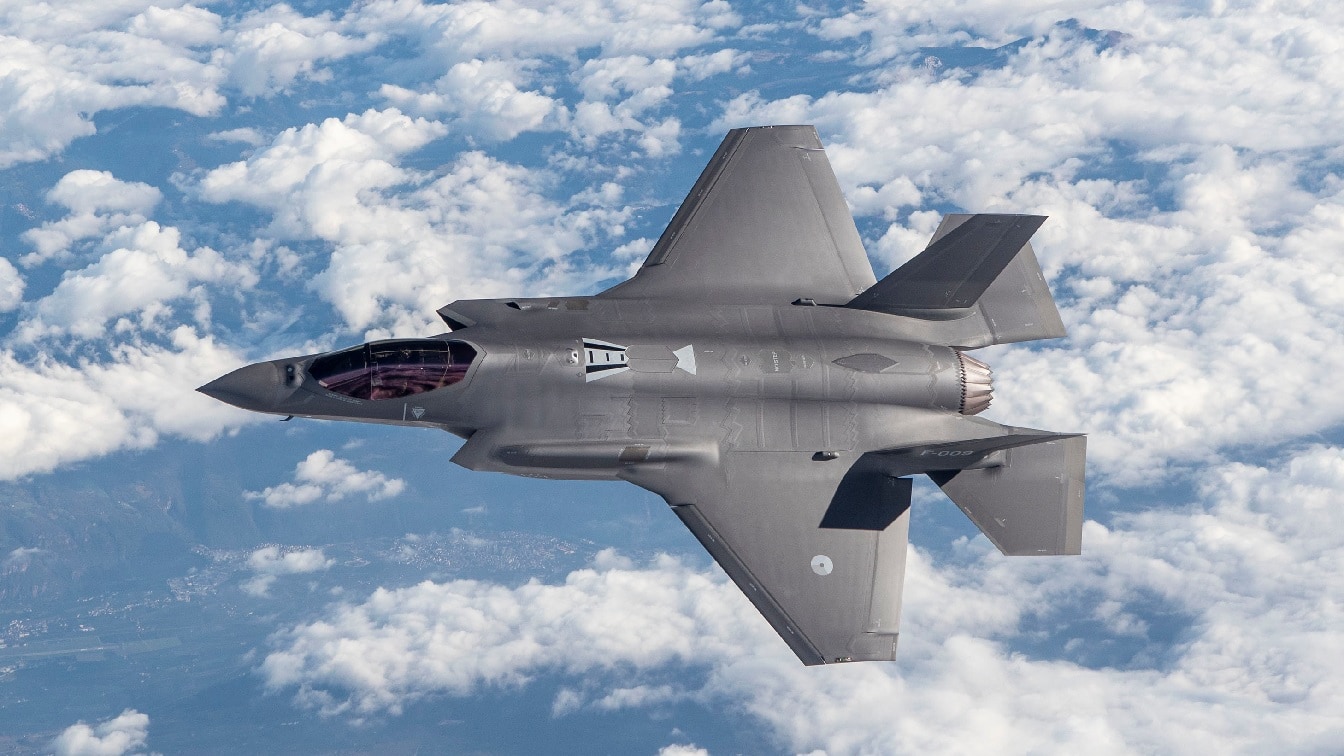
F-35 Joint Strike Fighter in the Netherlands. Image Credit: Creative Commons.
The aircraft is also highly agile, capable of performing 9g maneuvers, putting it on par with other elite fighters.
This deliberate design trade-off is central to understanding the aircraft. The F-35A is not intended to be the fastest or highest-climbing fighter, ceding pure kinematic superiority to dedicated air-to-air platforms like the F-22 Raptor.
Its true “performance” is computational. Official literature consistently emphasizes capabilities like “sensor fusion,” “network-enabled operations,” and “unprecedented situational awareness”.
The aircraft is frequently described as a “quarterback of the skies,” a node whose primary role is to see, decide, and direct the battle, often for other assets.
The value proposition is to win a fight by employing superior information to utilize weapons from a position of advantage, making a traditional close-range dogfight—where kinematics are king—a scenario the F-35 is engineered to avoid entirely.
Judging the F-35A on traditional fighter metrics like top speed is to misunderstand its design philosophy fundamentally; its power lies in its advanced “brain” (sensors and fusion), not its “brawn” (raw speed and agility).
|
Metric |
Specification |
|
Primary Function |
Multirole Fighter |
|
Prime Contractor |
Lockheed Martin |
|
Power Plant |
Pratt & Whitney F135-PW-100 |
|
Thrust (with afterburner) |
43,000 lbs / 191 kN |
|
Length |
51.4 ft / 15.7 m |
|
Height |
14.4 ft / 4.38 m |
|
Wingspan |
35 ft / 10.7 m |
|
Max Takeoff Weight |
~70,000 lbs / 31,800 kg |
|
Internal Fuel Capacity |
18,498 lbs / 8,278 kg |
|
Max Speed (with internal load) |
Mach 1.6 (~1,200 mph) |
|
Combat Radius (internal fuel) |
>590 nm / >1,093 km |
|
Service Ceiling |
>50,000 ft / 15 km |
|
Max G-Rating |
9.0g |
The Pillars of 5th-Generation Capability
The F-35A’s combat effectiveness is built on a foundation of interconnected, next-generation technologies that define it as a 5th-generation fighter.
- Very Low Observability (Stealth): The F-35’s airframe shape, advanced composite materials, and internal weapons carriage are all meticulously designed to minimize its radar cross-section. This stealth capability is not invisibility, but rather a means to delay or deny detection by enemy air defense systems, allowing it to penetrate heavily contested airspace and engage targets before the adversary can effectively react. This is its primary survival mechanism, a departure from the speed, altitude, or armor of legacy aircraft.
- Advanced Sensor Suite: The heart of the F-35 is its integrated suite of powerful electronic sensors.
- AN/APG-81 AESA Radar: Developed by Northrop Grumman, this Active Electronically Scanned Array radar provides remarkable long-range air-to-air and air-to-ground tracking of multiple targets. It can also function as a potent electronic warfare aperture, capable of jamming enemy radars and disrupting attacks.
- AN/AAQ-37 Distributed Aperture System (DAS): This system consists of six infrared cameras mounted around the airframe to provide the pilot with a complete 360-degree spherical view of the surrounding environment. The DAS automatically detects and tracks incoming aircraft and missiles from any direction, and its imagery can be projected onto the pilot’s helmet display, allowing them to effectively “see through” the floor of the cockpit.
- AN/AAQ-40 Electro-Optical Targeting System (EOTS): Mounted internally under the aircraft’s nose, the EOTS provides precision targeting capabilities without compromising the F-35’s stealth profile. It combines forward-looking infrared (FLIR) and infrared search-and-track (IRST) functions, enabling long-range detection and targeting of both air and ground threats.
- Sensor Fusion and Situational Awareness: The truly revolutionary aspect of the F-35 is not just the power of its individual sensors, but its ability to process and fuse the vast amounts of data they collect—along with information piped in from off-board sources like AWACS, satellites, and other F-35s—into a single, coherent, and intuitive picture of the battlespace. This fused data is displayed on the pilot’s advanced helmet-mounted display, providing unprecedented situational awareness and dramatically reducing the pilot’s cognitive workload, allowing them to make faster and better tactical decisions.
The Claws of the Lightning: Armament and Weapon Systems
“Stealth Mode” vs. “Beast Mode”: The Loadout Trade-Off
The F-35A’s lethality is intrinsically linked to a critical mission trade-off between stealth and firepower. To maintain its very low observable profile, the aircraft must carry all of its fuel and weapons internally within two weapons bays. In this “stealth mode,” a typical loadout for a strike mission consists of two medium-range air-to-air missiles and two precision-guided air-to-ground bombs.
When operating in less contested airspace where stealth is not the primary concern, the F-35A can utilize six external hardpoints on its wings and fuselage. This configuration, colloquially known as “beast mode,” allows it to carry a much larger payload, with a maximum ordnance capacity of up to 22,000 pounds. This provides significant mission flexibility, allowing it to function as a heavy bomb truck when needed, but at the cost of its stealth characteristics.
Air-to-Air and Air-to-Ground Arsenal
The F-35A is certified to carry a wide and growing array of advanced munitions from the U.S. and allied inventories.
- Air-to-Air: The primary beyond-visual-range (BVR) weapon is the Raytheon AIM-120 AMRAAM (Advanced Medium-Range Air-to-Air Missile), carried internally. For close-range, within-visual-range engagements, it can carry the AIM-9X Sidewinder high-off-boresight missile on its external wingtip stations. Lockheed Martin is developing a “Sidekick” adapter that will allow the F-35A to carry six internal AMRAAMs, increasing its BVR lethality while remaining in stealth mode.
- Air-to-Ground: The aircraft’s strike capability is centered on precision-guided munitions. It can internally carry 2,000-pound GBU-31 Joint Direct Attack Munitions (JDAMs) and smaller GBU-39 Small Diameter Bombs (SDBs). Ongoing Block 4 software and hardware upgrades will integrate new weapons, including the developmental Stand-in Attack Weapon (SiAW) for targeting enemy air defenses and the Joint Strike Missile (JSM) anti-ship missile. Critically, the F-35A was certified in October 2023 to carry the B61-12 nuclear gravity bomb, making it a dual-capable tactical aircraft.
The GAU-22/A Cannon: A Troubled History
The F-35A is the only variant with an internally mounted gun: a four-barreled 25mm GAU-22/A Gatling cannon located in the left wing root to preserve stealth. The weapon has a high rate of fire at 3,300 rounds per minute, but its ammunition capacity is extremely limited at just 180 rounds, providing only about three seconds of total firing time. The gun program has been plagued by significant issues for years.
Early testing revealed unacceptable inaccuracy, with rounds missing targets due to misalignments in the gun mounts that caused the barrel to shift during firing. Furthermore, the software symbology used for aiming in the pilot’s helmet display was initially deemed “operationally unusable and potentially unsafe”. While the Pentagon now considers the gun “effective” after software fixes and structural modifications, its limited ammunition and long-standing problems have fueled intense debate about the F-35A’s suitability for the close air support (CAS) role, where a reliable and accurate gun is often considered essential.
|
Configuration |
Internal Bay Stations (4) |
External Stations (6) |
Internal Gun |
Total Payload |
|
Stealth Mode |
2x AIM-120 AMRAAM 2x GBU-31 JDAM |
None |
1x GAU-22/A (180 rounds) |
~5,700 lbs |
|
“Beast Mode” |
2x AIM-120 AMRAAM 2x GBU-31 JDAM |
2x AIM-9X Sidewinder + Additional Bombs/Missiles |
1x GAU-22/A (180 rounds) |
Up to 22,000 lbs |
From Test Flights to Combat Skies: Operational History and Global Deployment
Developmental Timeline: A Long Road to Readiness
The F-35A’s path from its first flight to full combat capability has been a long and arduous one, marked by both major milestones and significant setbacks. The first prototype, designated AA-1, made its maiden flight on December 15, 2006.
The U.S. Air Force officially declared Initial Operational Capability (IOC) for the F-35A on August 2, 2016, with the 34th Fighter Squadron at Hill Air Force Base, Utah, becoming the first combat-ready unit.
This journey was far from smooth. The program’s reliance on “concurrency”—building production aircraft while development and testing were still ongoing—led to costly retrofits when design flaws were discovered. Early in the program, significant weight problems required a major, 18-month redesign that cost billions. Software development proved to be a persistent bottleneck, pushing back timelines repeatedly.
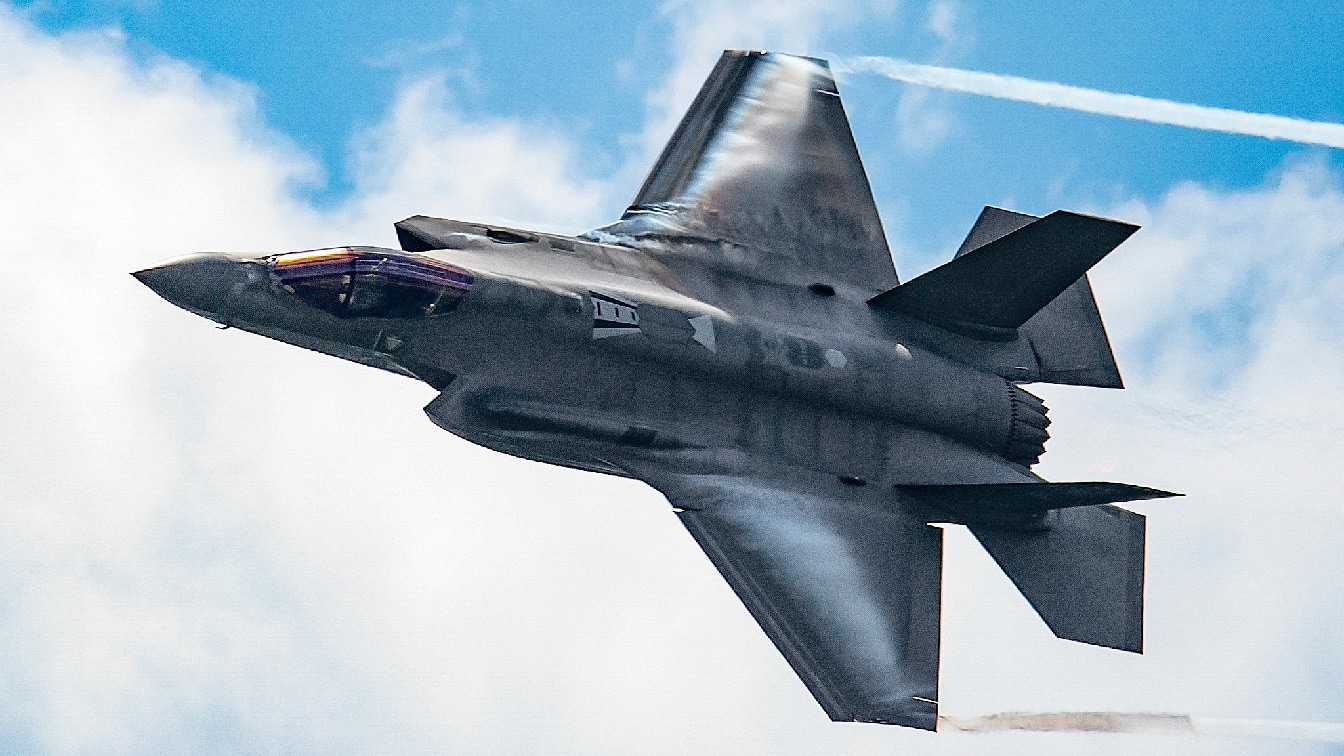
F-35. Image Credit: Lockheed Martin.
The protracted nature of this development cycle is starkly illustrated by the fact that the decision to authorize full-rate production—a milestone signifying program maturity—was not made until March 12, 2024, more than 22 years after Lockheed Martin was first awarded the contract.
Trial by Fire: The F-35A’s First Combat Employment
While the Israeli Air Force was the first to use any F-35 variant in combat in 2018, the U.S. Air Force’s F-35A had its own trial by fire a year later. On April 30, 2019, two F-35As conducted the variant’s first-ever combat employment.
The mission involved an airstrike against an entrenched Islamic State (ISIS) tunnel network and weapons cache in the Hamrin Mountains of Iraq.
The aircraft used Joint Direct Attack Munitions (JDAMs) to destroy the target. This inaugural combat sortie was launched from Al Dhafra Air Base in the United Arab Emirates, as part of the F-35A’s first deployment to the U.S. Central Command area of responsibility.
The Global Enterprise: A Network of Operators
The F-35A is the most common variant of the Lightning II and has become a cornerstone of air power for a large and growing coalition of nations. This widespread adoption fulfills one of the JSF program’s central strategic goals: ensuring deep interoperability among allied forces. Beyond the U.S. Air Force, which plans to procure 1,763 F-35As, the aircraft is operated by numerous international partners and Foreign Military Sales customers.
This global user base creates a shared logistics and training network, reinforcing the program’s collaborative foundation.
|
Country |
Operating Service |
Aircraft (Operational/Planned) |
Primary Operational Bases |
|
Australia |
Royal Australian Air Force |
72 / 72 |
RAAF Base Williamtown, RAAF Base Tindal |
|
Canada |
Royal Canadian Air Force |
0 / 88 |
Delivery from 2026 |
|
Denmark |
Royal Danish Air Force |
17 / 27 |
Skrydstrup Air Base |
|
Germany |
German Air Force (Luftwaffe) |
0 / 35 |
Büchel Air Base |
|
Italy |
Italian Air Force |
17+ / 75 |
Amendola Air Base, Ghedi Air Base |
|
Japan |
Japan Air Self-Defense Force |
40+ / 105 |
Misawa Air Base |
|
Netherlands |
Royal Netherlands Air Force |
39 / 52+ |
Leeuwarden Air Base, Volkel Air Base |
|
Norway |
Royal Norwegian Air Force |
52 / 52 |
Ørland Air Station, Evenes Air Station |
|
South Korea |
Republic of Korea Air Force |
39 / 60 |
Cheongju Air Base |
|
United Kingdom |
Royal Air Force |
(Operates F-35B) |
RAF Marham |
The Trillion-Dollar Fighter: A Deep Dive into F-35A Program Costs
The F-35 is the most expensive weapons system in history, and its costs are subject to intense scrutiny and frequent misunderstanding. The total cost can be broken down into three main categories: flyaway cost, operational cost, and total lifecycle cost.
The Flyaway Cost: A Story of Decline and Resurgence
The “flyaway cost” refers to the price of a single, finished aircraft including its engine and mission systems. This has been a major focus of the program office and Lockheed Martin. Early low-rate initial production (LRIP) lots saw F-35A costs exceeding $200 million per unit.Through significant manufacturing efficiencies and the benefits of economies of scale as production ramped up, the program successfully drove this cost down dramatically, reaching a low of approximately $78 million per aircraft in Lot 14.
However, this downward trend has reversed. The contract for Lots 15-17 saw the average F-35A flyaway cost rise to $82.5 million.
This increase is attributed to several factors, including lower annual production quantities, persistent inflation, and the integration of more complex and capable hardware associated with the Technology Refresh 3 (TR-3) upgrade, which is necessary for future capabilities.
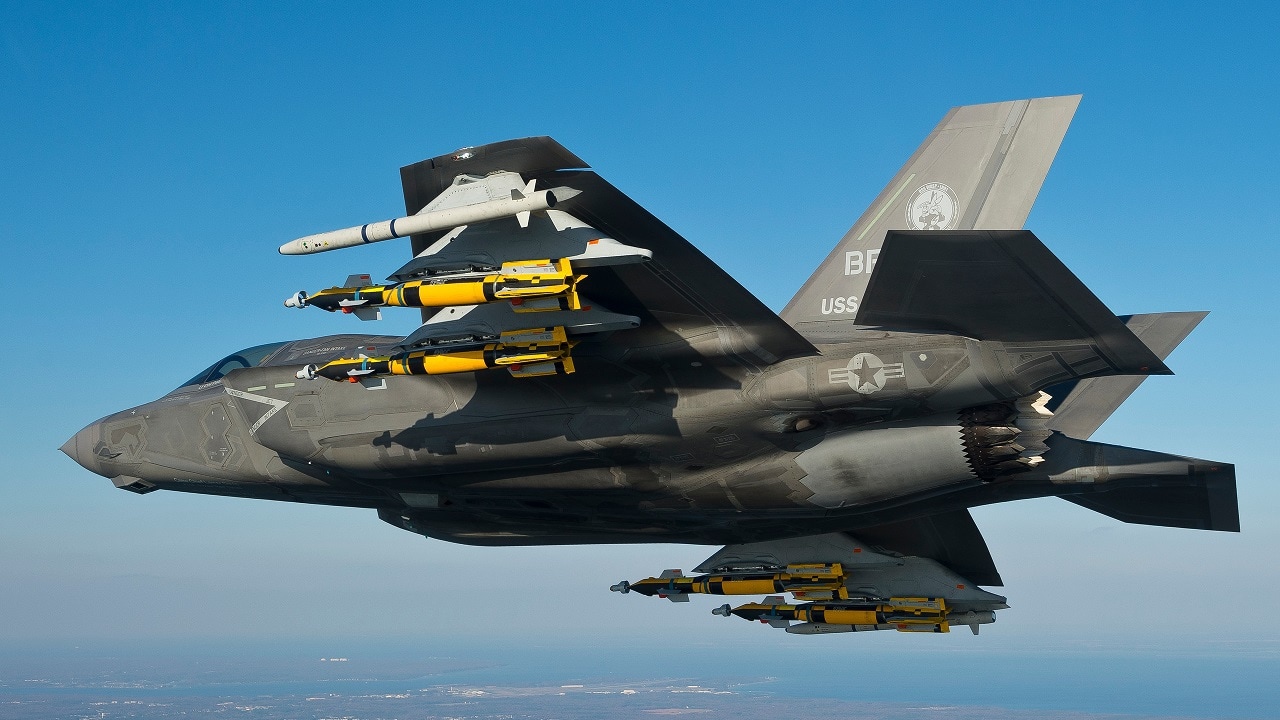
F-35 Joint Strike Fighter. Image Credit: Lockheed Martin.
The Cost Per Flight Hour (CPFH): A Stubborn Challenge
While the flyaway cost is a one-time expense, the Cost Per Flight Hour (CPFH) represents the ongoing burden of operating and supporting the aircraft. This has been one of the program’s most persistent and critical problems. The original, ambitious target was a CPFH of $25,000 (in 2012 dollars), which would have been comparable to the F-16 it replaces.
The reality has been far different. The actual CPFH has remained stubbornly high, with various government and independent reports citing figures ranging from $33,600 to $42,000 in different fiscal years.
According to a 2023 U.S. Government Accountability Office (GAO) report, the Air Force’s annual cost to operate and sustain an individual F-35A is estimated at $6.6 million, significantly higher than its original affordability target of $4.1 million.
A subsequent estimate for the 2024 Annual Cost Estimate projects this figure will rise further to $7.5 million.
This high CPFH has direct consequences, forcing the military services to fly their aircraft less than planned to stay within budget, which in turn impacts pilot proficiency and overall fleet readiness.
The Total Program Lifecycle Cost: Deconstructing the $2 Trillion Figure
The most sensational figure associated with the F-35 is its total lifecycle cost, which is now estimated to exceed $2 trillion.
This staggering number is often presented without context. It represents the total estimated cost for the entire planned U.S. procurement of nearly 2,500 aircraft across all three services, and includes all development, production, and—most significantly—all sustainment and operational costs over the program’s entire lifespan, which is projected to run through the year 2088.
The sustainment portion alone accounts for the vast majority of this total, at an estimated $1.58 trillion.
Furthermore, approximately half of the $2 trillion estimate—around $1 trillion—is the projected effect of inflation over this 94-year period.
While the figure is immense, the F-35 program is one of the first to attempt such a comprehensive, cradle-to-grave cost forecast from its outset.
This has led to what can be described as an “affordability shell game.” The GAO has reported that the military services have managed to meet their revised “affordability targets” for the F-35A, but not by fundamentally reducing the aircraft’s high operating costs. Instead, this has been achieved on paper through two primary administrative maneuvers. First, the services have drastically reduced the number of hours they plan to fly each jet annually; the Air Force, for instance, cut its planned F-35A flight hours at steady state by 21%, from 230 to 187 hours per year. Second, the services have increased the budget they say they can “afford.”
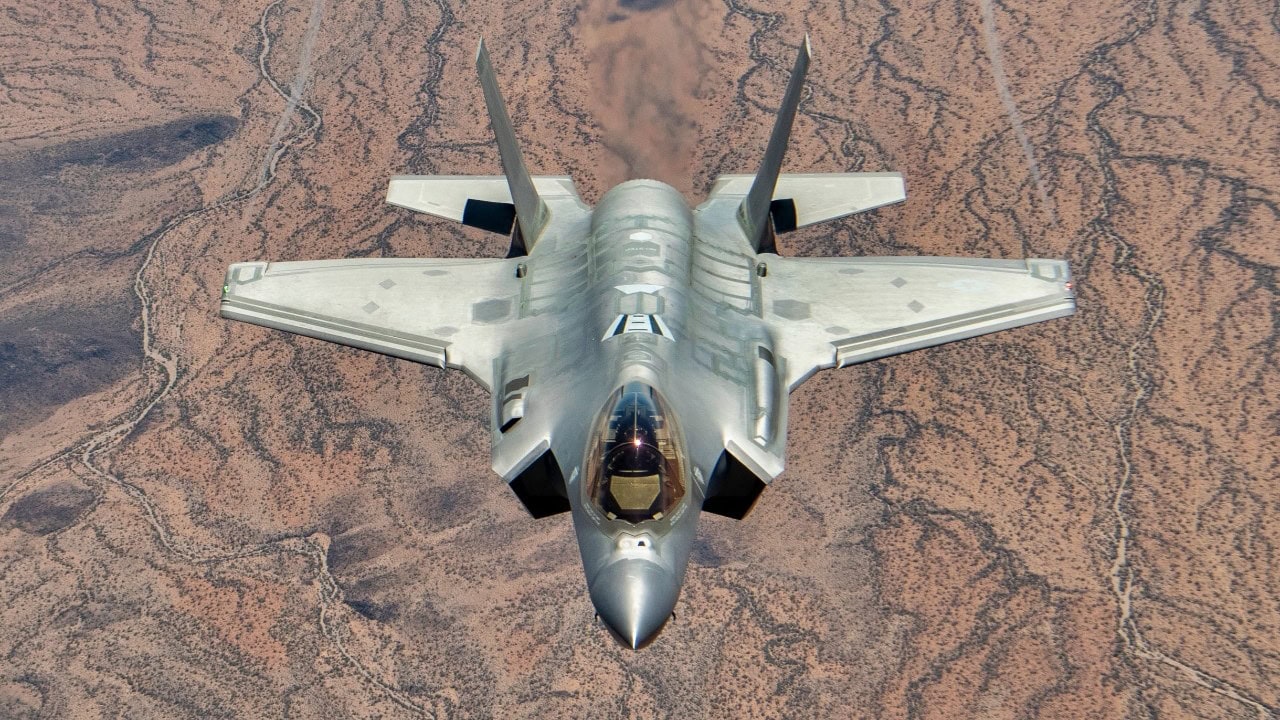
LUKE AIR FORCE BASE, Ariz. – Col. (ret) Jim Greenwald, previous 944th Fighter Wing commander, flies his F-35 Lightning II over the state of Arizona, June 3, 2021. The 944th FW is the Air Force Reserve Command’s most diverse fighter wing as it’s the only wing that trains on four different airframes: the F-35 Lightning II, F-16 Fighting Falcon, F-15E Strike Eagle, and the A-10 Thunderbolt II. (U.S. Air Force photo/ Tech Sgt. Nestor Cruz)
The Air Force raised its affordability target from $4.1 million per plane per year to $6.8 million. By flying less (reducing expenditures) and increasing the budget (raising the spending ceiling), the program can appear to be meeting its goals. However, this is an accounting solution, not a cost-saving one, with the dangerous third-order effect of potentially degrading pilot training and combat readiness.
Trials and Tribulations: Program Challenges and Enduring Criticisms
The “Concurrency” Gamble: Building While Designing
A core strategy of the F-35 program was “concurrency”—the practice of starting low-rate production before development and testing were complete. This was intended to accelerate the delivery of aircraft to the warfighter. However, the gamble proved to be enormously expensive. Design flaws and performance issues discovered in test aircraft had to be fixed not only in future designs but also retrofitted onto production jets that were already built or on the assembly line, a process that added billions to the program’s cost and contributed to years of delays.
Reliability and Availability: The Achilles’ Heel
Despite being in operational service for years, the F-35 fleet has consistently failed to meet its own readiness targets. Multiple reports have shown the fleet’s full mission capable rate—the percentage of aircraft ready to perform any and all assigned missions at a given time—to be well below its goals, with some reports citing rates of less than 50%.
The GAO has confirmed that none of the F-35 variants are meeting their availability goals. The problems are multifaceted, ranging from the stealth coating being difficult and time-consuming to maintain, to a persistent shortage of spare parts, inadequate depot capacity, and ongoing engine reliability issues.
The Software Quagmire: ALIS, ODIN, and TR-3
The F-35’s advanced capabilities are defined by its software, which has proven to be one of the most complex and troubled aspects of the program. The original logistics system, known as the Autonomic Logistics Information System (ALIS), was intended to be the digital backbone for managing the global supply chain, maintenance, and diagnostics. In practice, it was notoriously buggy, slow, and according to the Pentagon’s own testing office, “impeded, rather than facilitated, effective maintenance”.
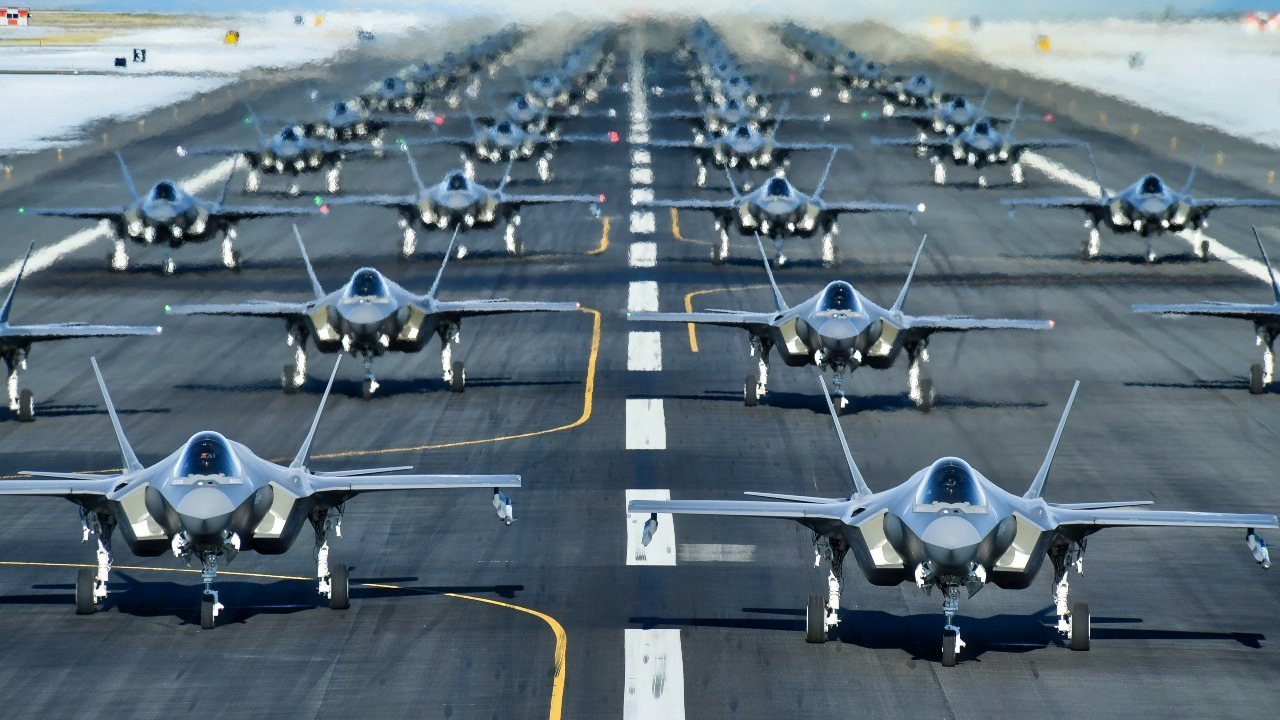
F-35 Elephant Walk. Image Credit: Creative Commons.
Its planned cloud-based replacement, the Operational Data Integrated Network (ODIN), has also faced its own development stalls and funding cuts. More recently, the crucial Technology Refresh 3 (TR-3) upgrade, which provides the advanced computer core and memory required for all future Block 4 capabilities, is years behind schedule due to software stability issues. This delay became so critical that it forced the Pentagon to halt deliveries of newly built F-35s for nearly a year, creating a costly backlog of completed aircraft that could not be accepted by the military.
The CAS Debate: Is the F-35A a Worthy A-10 Replacement?
One of the most heated and enduring debates surrounding the F-35A is whether it can effectively replace the legendary A-10 “Warthog” for the Close Air Support (CAS) mission. Critics point to the F-35A’s significant disadvantages in this specific role: a smaller weapons load, very limited cannon ammunition, a lack of armor and redundant systems, and a reliance on high-altitude flight for survival. This is in stark contrast to the A-10, which was designed from the ground up to be a rugged, low-flying tank-killer that can absorb significant battle damage and bring its pilot home.
Comparative fly-off tests between the two aircraft, though heavily redacted, revealed that it would take more F-35 sorties to attack the same number of targets as an A-10, and that A-10 pilots demonstrated better bombing accuracy, in part because their aircraft’s survivability allowed them to fly closer to the target. Proponents of the F-35A argue that in a modern, high-threat environment with advanced surface-to-air missiles, the A-10 is too vulnerable to survive, and that the F-35A’s stealth and advanced sensors allow it to perform the CAS mission from a safer distance.
|
Metric |
F-35A Lightning II |
F-16C Fighting Falcon |
A-10C Thunderbolt II |
|
Primary Role |
Multirole Stealth Fighter |
Multirole Fighter |
Close Air Support (CAS) |
|
Flyaway Cost (Approx.) |
$82.5 Million |
~$60 Million |
~$19.5 Million |
|
CPFH (Approx.) |
~$35,000+ |
~$25,500 |
~$20,000 (Varies) |
|
Max Speed |
Mach 1.6 |
Mach 2.0+ |
Mach 0.75 |
|
Cannon / Ammo |
1x 25mm / 180 rounds |
1x 20mm / 511 rounds |
1x 30mm / 1,150-1,350 rounds |
|
Key Advantage |
Stealth, Sensor Fusion |
Agility, Cost-Effectiveness |
Survivability, Firepower |
|
Key Disadvantage |
High Operating Cost, Complexity |
Lacks Stealth |
Vulnerable to Modern Air Defenses |
Conclusion: An Analytical Outlook on the F-35A’s Role in Future Air Combat
The F-35A Lightning II is a machine of profound dualities: it is at once a technological marvel and a cautionary tale of unchecked ambition. On one hand, it has successfully delivered a revolutionary capability in stealth and information dominance that will form the cornerstone of U.S. and allied air power for decades. Its ability to penetrate the most advanced air defenses and act as a “seeing eye” for the entire joint force is a capability that no 4th-generation aircraft can replicate. However, this was achieved by sacrificing its initial promise of affordability and by embracing a level of technological complexity that continues to challenge its day-to-day reliability and sustainment.
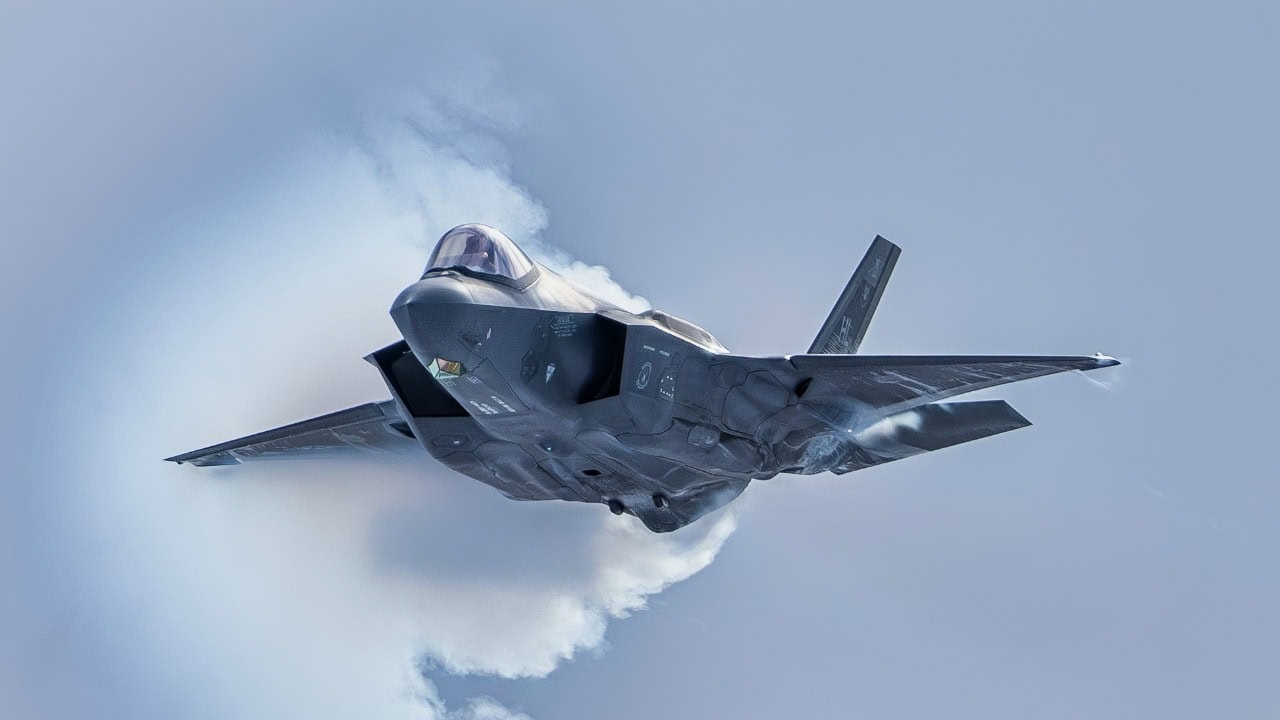
A U.S. Air Force F-35A Lightning II assigned to the F-35A Lightning II Demonstration Team performs a practice airshow performance at Hill Air Force Base, Utah, Jan. 11, 2023. The F-35 Demo Team performs rehearsal flights regularly to maintain required flying certifications and to uphold and maintain their mission and Air Force recruiting standards. (U.S. Air Force photo by Staff Sgt. Kaitlyn Ergish)
The ultimate success of the F-35A will not be measured in the turning performance of a dogfight, a scenario it is designed to render obsolete, but in its ability to enable and elevate the entire joint force. Its true value lies in its function as a survivable, networked sensor and shooter. The critical challenge ahead is not in its design philosophy, which has proven potent, but in the monumental task of making its operation affordable and sustainable. The program’s ability to solve the deeply entrenched problems of high cost-per-flight-hour and low availability rates will determine its ultimate legacy.
It will decide whether the F-35A truly fulfills its intended role as the versatile workhorse of 21st-century air combat, or if its expense relegates it to a high-end, niche capability used more sparingly than its designers ever intended. The future of Western air dominance is inextricably linked to the answer.
About the Author: Harry J. Kazianis
Harry J. Kazianis (@Grecianformula) is a national security expert based in Orlando, Florida. Kazianis was Senior Director of National Security Affairs at the Center for the National Interest (CFTNI), a foreign policy think tank founded by Richard Nixon based in Washington, DC. He also served as Executive Editor of its publishing arm, The National Interest. Harry has over a decade of experience in think tanks and national security publishing. His ideas have been published in the NY Times, Washington Post, Wall Street Journal, CNN, and many other outlets worldwide. He has held positions at CSIS, the Heritage Foundation, the University of Nottingham, and several other institutions related to national security research and studies.
